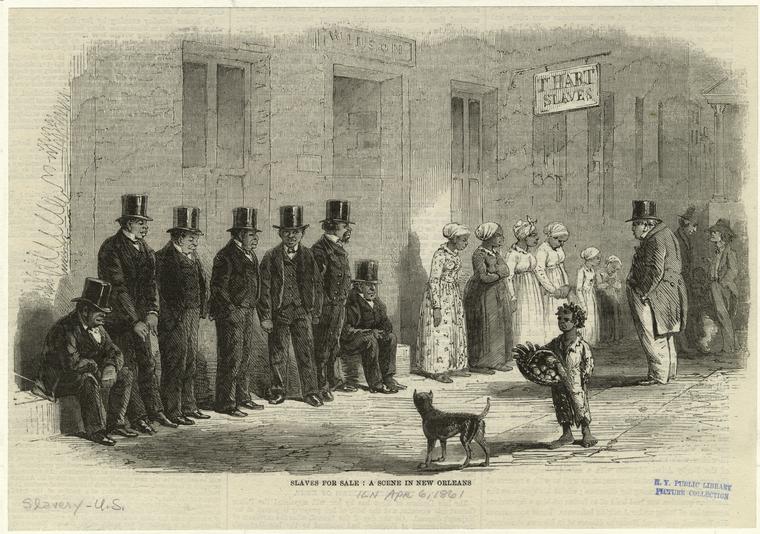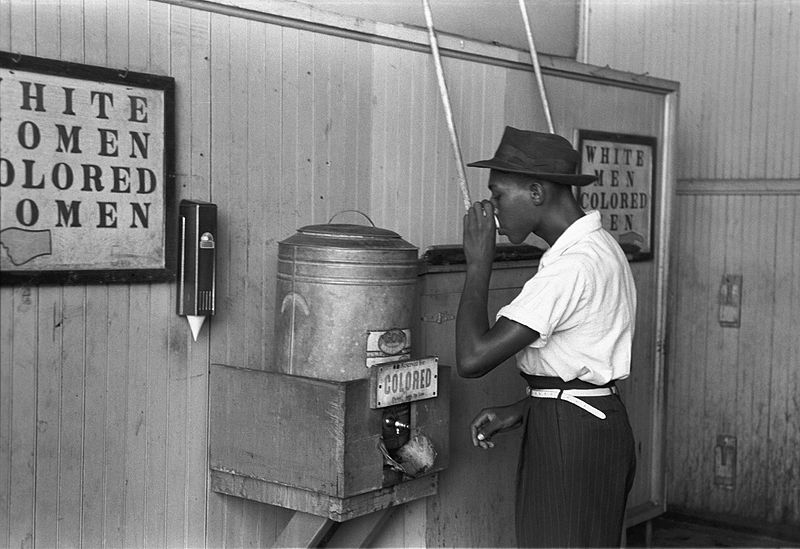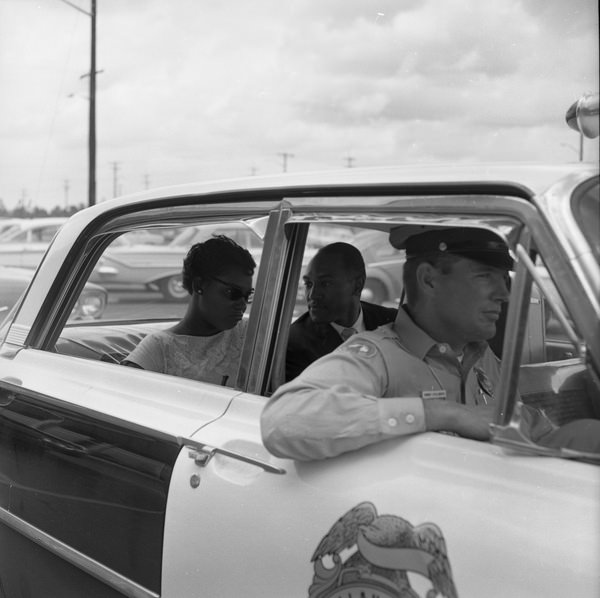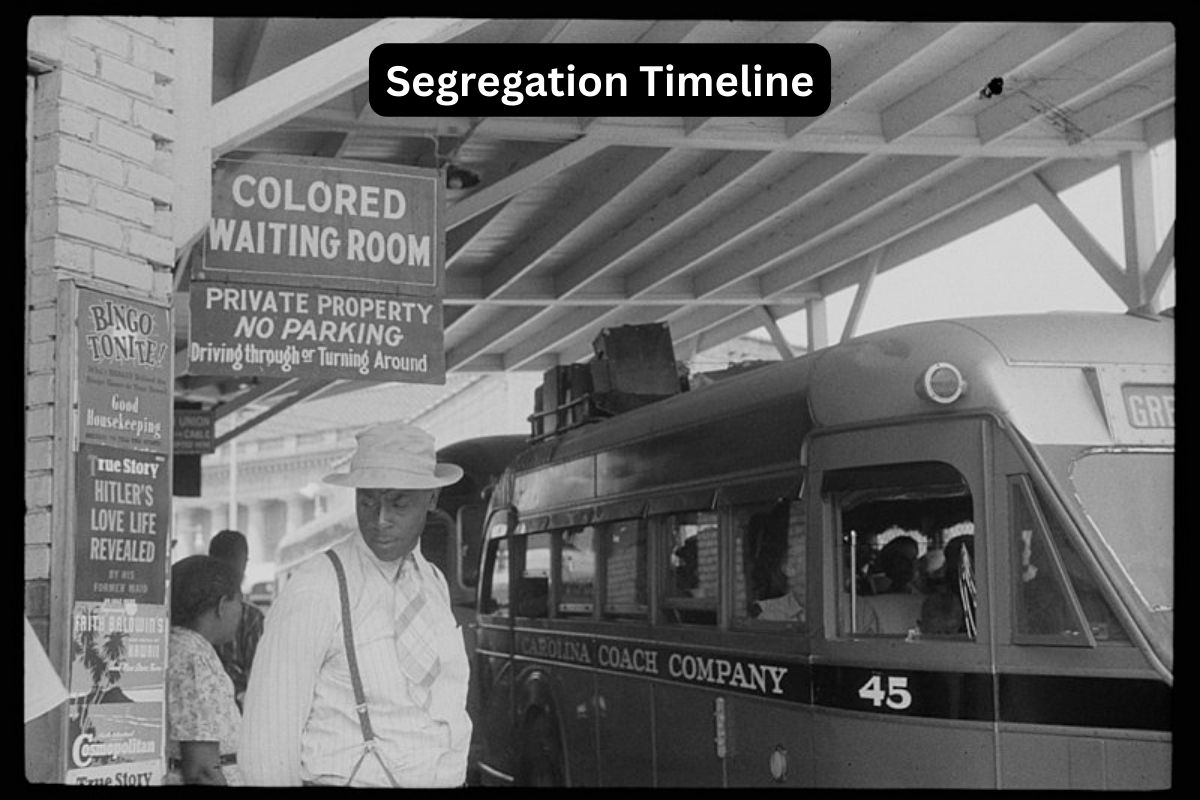In the complex and troubling history of the United States, the timeline of segregation spans centuries and serves as a stark reminder of the deep-seated racial inequality that has shaped the nation.
This history primarily affected African Americans and other minority groups, particularly in the Southern states.
From the introduction of slavery in the 1600s to the post-segregation era and ongoing challenges, the journey towards racial equality in America has been marked by significant milestones, legal battles, and social movements.
This timeline provides a glimpse into the evolution of segregation and the ongoing struggle for civil rights and racial equality
| Year | Event |
|---|---|
| 1600s-1800s | Slavery in the American colonies begins. |
| Late 1800s | 13th Amendment abolishes slavery (1865). |
| 14th Amendment grants citizenship and equal protection (1868). | |
| 15th Amendment prohibits racial discrimination in voting (1870). | |
| Late 1800s-1900s | Jim Crow laws mandate racial segregation (late 19th-early 20th century). |
| Plessy v. Ferguson establishes “separate but equal” doctrine (1896). | |
| Early to Mid-1900s | Great Migration of African Americans to Northern cities. |
| Brown v. Board of Education declares school segregation unconstitutional (1954). | |
| Late 1950s-1960s | Civil Rights Movement gains momentum. |
| Civil Rights Act of 1964 and Voting Rights Act of 1965 are passed. | |
| Late 1960s-Present | Official segregation laws abolished; de facto segregation persists. |
| Ongoing efforts to address racial disparities and promote equality. |
Timeline of Segregation
1600s-1800s: Slavery in the American Colonies Begins
Slavery was introduced to the American colonies in the early 17th century, primarily as a labor system for agricultural work, such as tobacco and cotton farming.
African Americans were forcibly brought to the colonies as slaves, enduring unimaginable hardships during the Middle Passage, the voyage from Africa to the Americas.
Also Read: Facts About Segregation
Slavery became deeply entrenched in the Southern colonies, with the economy and society heavily reliant on enslaved labor. Plantation owners and slaveholders wielded significant power, while enslaved people had no legal rights and were considered property.
Slavery persisted for almost 250 years in the American colonies, creating a system of racial inequality and segregation that would have lasting consequences.

Late 1800s: Abolition of Slavery and Constitutional Amendments
The Civil War (1861-1865) had a profound impact on the United States, culminating in the abolition of slavery with the passage of the 13th Amendment in 1865. This amendment declared that “neither slavery nor involuntary servitude, except as a punishment for crime whereof the party shall have been duly convicted, shall exist within the United States, or any place subject to their jurisdiction.”
Following the Civil War, the 14th Amendment was ratified in 1868. It granted citizenship to all people born or naturalized in the United States and provided equal protection under the law, regardless of race.
The 15th Amendment, ratified in 1870, prohibited racial discrimination in voting, stating that “the right of citizens of the United States to vote shall not be denied or abridged by the United States or by any State on account of race, color, or previous condition of servitude.”
Late 1800s-1900s: Jim Crow Laws and “Separate but Equal” Doctrine
Despite the constitutional amendments that aimed to secure the rights and equality of African Americans, many Southern states enacted a series of discriminatory laws known as Jim Crow laws in the late 19th and early 20th centuries.
Jim Crow laws mandated racial segregation in public facilities, schools, transportation, and various aspects of daily life, effectively creating a segregated society where African Americans and white Americans were separated in nearly every sphere.
The Supreme Court case Plessy v. Ferguson in 1896 further entrenched segregation by establishing the “separate but equal” doctrine. This legal precedent allowed racial segregation as long as facilities were considered equal in quality. In practice, facilities for African Americans were often far inferior to those for white Americans, perpetuating racial inequality and segregation.

Early to Mid-1900s: Great Migration and Desegregation
The early to mid-1900s witnessed significant demographic changes in the United States, particularly in the African American community. This period is known as the Great Migration, during which millions of African Americans moved from the rural South to the industrialized Northern cities.
The Great Migration was driven by several factors, including a desire to escape the harsh conditions of Jim Crow segregation in the South, seek better economic opportunities, and flee racial violence and discrimination.
Northern cities, such as Chicago, Detroit, and New York, became hubs for African American culture and activism. These cities offered relatively better job prospects and educational opportunities, although they still faced racial discrimination and segregation in various forms.
Late 1950s-1960s: Civil Rights Movement and Landmark Legislation
The late 1950s and the 1960s marked a pivotal period in American history with the rise of the Civil Rights Movement. This movement aimed to end racial segregation, discrimination, and the denial of civil rights to African Americans.
Dr. Martin Luther King Jr. emerged as a prominent leader in the Civil Rights Movement, advocating for nonviolent civil disobedience and racial equality.
One of the most significant milestones in this era was the Supreme Court’s landmark decision in Brown v. Board of Education in 1954. The Court ruled that state laws establishing separate public schools for black and white students were unconstitutional, effectively overturning the “separate but equal” doctrine established in Plessy v. Ferguson.
The Civil Rights Act of 1964 was a transformative piece of legislation that outlawed discrimination on the basis of race, color, religion, sex, or national origin. It prohibited segregation in public places, schools, and employment, making it illegal to discriminate on the basis of race.

Late 1960s-Present: Post-Segregation Era and Ongoing Challenges
While the Civil Rights Movement achieved significant victories in ending legal segregation and securing important civil rights legislation, challenges persisted in the post-segregation era.
Official segregation laws were abolished, but de facto segregation, often resulting from housing discrimination, continued to exist in many parts of the United States.
Ongoing efforts to address racial disparities and promote equality have taken various forms, including affirmative action policies, diversity initiatives, and desegregation efforts in education.
The fight for racial equality remains a central issue in American society, with ongoing discussions about systemic racism, social justice, and the need to address disparities in areas such as education, criminal justice, and economic opportunity.
